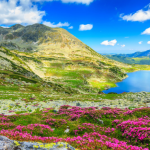Italy – History
Trade unions
Italy became a nation-state belatedly on 17 March 1861, when most of the states of the peninsula were united under king Victor Emmanuel II of the House of Savoy, which ruled over Piedmont. The architects of Italian unification were Camillo Benso, Count of Cavour, the Chief Minister of Victor Emmanuel, and Giuseppe Garibaldi, a general hero. After the unification of Italy, the country did not have a factory proletariat similar to the most industrialised european nations. The only embryonic figures that could be traced back to the trade union movement were the mutual aid societies, which, however, rejected strikes as a means of struggle, preferring simple solidarity between their members.
It was not until the end of the 19th century that the first trade union movements and organisations representing workers arose. Thanks to the industrial take-off that Italy experienced between the beginning of the 20th century and its entry into the First World War, the industrial proletariat that had been absent in the years following unification was formed during the Giolitti era. In 1906, the first trade union confederation was born, bringing together the previous trade federations present throughout the country, the General Confederation of Labour (CGL).
The years leading up to the First World War were characterised by the rise in popularity of the Socialist Party.
In central northern Italy the presence of the Socialist Party was very strong, expressing itself in the control of municipal administrations and above all of the ‘red leagues’, trade unions representing almost all the workers in the area. The red leagues system, while on the one hand protecting the positions of the proletariat, also had serious distortions, since those who did not belong had practically no chance of finding employment. In fact, the leagues ran their own employment offices where it was necessary to be registered in order to be co-opted by employers.
After the end of the war, the country experienced a period of violent street protests and a very high level of social conflict.
In 1919, the metalworkers’ union, the strongest within the General Confederation of Labour (FIOM, Federazione Italiana operai metallurgici), called a series of strikes in order to obtain an improvement in pay and working conditions. Following the refusal of the industrialists’ representatives, the Fiom gave orders to about 400,000 workers to occupy the factories, whose surveillance was entrusted to the “red guards”, real armed patrols of workers. Even the public services sector, traditionally not very unionised, experienced an impressive series of abstentions of its employees.
In the second post-war period there was a news episode that caused such an uproar in the country that it led to a series of violent street demonstrations: the assassination attempt on Palmiro Togliatti, secretary of the Communist Party, by a young right-winger. Following this incident, the social-communist component of the CGL proclaimed a series of national strikes, in disagreement with the moderate Catholic current. The latter, for its part, left the CGL in protest and founded a new trade union federation, the CISL (Confederazione italiana sindacale del lavoro). Shortly afterwards, the social democrats and the republicans also opted for the creation of a new trade union acronym, the UIL (Italian Union of Labour). These three trade unions were, with varying fortunes, the main protagonists of the national economic and political scene, at least until recent years.
Subsequently, Italy experienced a period of high political and social conflict, triggered by the youth protest from overseas and then culminating in the ‘hot autumn’ of 1969. Unlike in the past, the demands of the working-class world were overlaid by the instances coming from a youth universe in ferment, which saw in the proletariat the natural ally for the overthrow of the established bourgeois order.
Often and willingly trade unions were no longer considered capable of responding to the increasingly pressing needs of a society in continuous evolution and too compromised with the institutions and parties that they were trying to replace.
In the current era, characterised by the digital revolution and globalisation, trade unions have further lost the weight they had in the 20th century, also because of the structural transformation of the economy, which has seen its centre in Italy shift from the secondary sector to the tertiary sector. In addition, trade unions have been affected by the strong crisis of representativeness that has characterised our recent political period, resulting in a proliferation of autonomous acronyms and a loss of trust in traditional trade union organisations.
Feminist movements
Italy experienced vividly the Feminist movement as a protagonist, especially after the Second World War.
Between the 1950s and the 1960s, the demands of feminist movements in Italy centred on emancipation and equality, i.e. the demand to have equal rights and duties with men and the desire to gain space in national, economic, personal and social life, equal to ‘colleagues’ of the opposite sex. The right to vote for women came in 1946 and equal pay was an achievement in 1957, just to give two indicative examples.
Between the 1960s and 1970s, however, feminism in Italy became the bearer of new demands. New demands and needs that took the name of liberalisation and independence. Liberalisation of the role of women and their independence, accompanied by the ability to self-determine and manage themselves, with or without a man at their side.
Numerous feminist groups and feminist collectives were set up in Italy in the 1970s, thanks to the social and cultural ferment of the period, in which women discussed, confronted, met and organised themselves.
They criticised patriarchal models linked to machism. Pre-constituted orders based on male figures of reference are questioned. The focus of the dialogue and debate is on the institutions and values of patriarchal society. As stated in the 1970 ‘Women’s Revolt Manifesto’: ‘Feminism was the first political movement to historically criticise the family and society’.
There were numerous movements and associations, such as the ‘Feminist Struggle’, the ‘Women’s Liberation Movement’ or the ‘Italian Front for Women’s Liberation’, to name but a few. There were numerous demands, interests, areas of discussion and intervention.
Among the battle horses of feminism in the 1970s was certainly sexual liberalisation, through the liberalisation of contraception and abortion. For this the MLD organised meetings and demonstrations. The abortion law is dated 1978.
Green movements
In Italy, the environmentalist tradition dates back to the fifties. An important milestone was the founding of Italia Nostra in 1955, with a programme that tended to oppose land plundering at the beginning of the ‘economic miracle’. It was after the Seveso accident (1976), with the leakage of dioxin from a chemical company’s plants and the first debates on nuclear power stations, which were planned in large numbers in the National Energy Plan approved by Parliament in 1977, that the ecologist movement took on a new dimension in Italy, bringing together three souls: the conservationist, the environmentalist and the one linked to so-called ”political ecology”. After the Chernobyl catastrophe, this process culminated in the anti-nuclear referendums of November 1987, when around 80% of Italian citizens voted against the construction of atomic power stations. At the same time, the direct political commitment of a section of the ecological movement gave rise to the formation of ”green” electoral lists. The party made its debut at the 1987 general election and obtained 2.6% of the vote, gaining 13 seats in the Chamber of Deputies and two Senators. They have been bringing members into the Parliament until 2008. Since then they have been out of the Italian Parliament, and they lead small and extra-parliamentary campaigns, directly on the territory. In their history the Greens were never able to reach the electoral success of many green parties all around Europe. They had a stable share of vote around 2% and experienced a slight decline since 2010s. Their characterization as party of the far left did not help them in northern Italy, where they had their best results at the beginning (for instance 7.1% in the 1990 Venetian regional election).
The Greens were stronger in cities and urban areas (Milan, Venice, Rome, Naples, etc.), in northern mountain regions, such as Trentino-Alto Adige/Südtirol (especially in South Tyrol, where they were organised in the local Greens, a broader left-wing party) and Aosta Valley (where the local section, the Alternative Greens, were merged into Autonomy Liberty Participation Ecology in 2010), and in some southern regions, such as Basilicata and Campania.
Take a look at:




